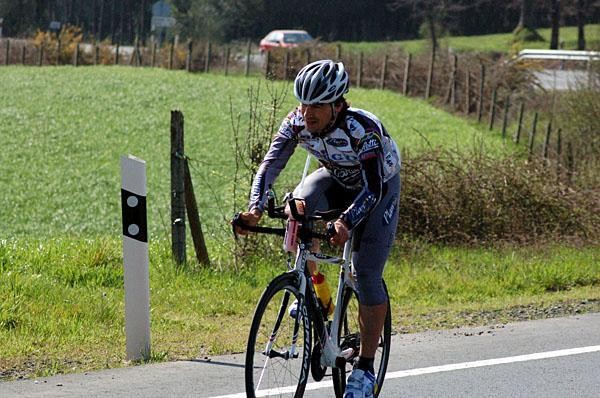Julian Sanz interview: Long distance exhalation
Spain's Julian Sanz is not in any Pro Tour team. Neither in a continental team. He is an ultra...

Spain's Julian Sanz is not in any Pro Tour team. Neither in a continental team. He is an ultra cycling rider. One of the few brave men who will dare to ride the unbelievably tough Race Across America. Cyclingnews' Hernan Alvarez took a closer look at the preparation of Sanz, who will hope to be one of those surviving the long race from Lake Henshaw, California, to Annapolis, Maryland, starting on USA's West Coast on June 8 and ending on the East Coast nine to 12 days later.
The Race Across America is fast approaching. In less than one week's time, Sanz will have to be ready for one of the biggest challenges in ultra distance cycling. His training is based on past experience with the Le Tour Ultime, a 4,000-kilometre race in France. Sanz has won the event, which is considered the world championship for long distance riders.
"The preparation [for RAAM] is very similar to the one I did for le Tour [Ultime] in 2006. I work with intensity. When I prepared le Tour 2007 it was based on volume, much volume. And the feeling I had was not as good as in 2006. That's why we work with more intensity and decreased the training volume a bit," explained Sanz. The intensity is needed as the average speeds aren't particularly slow. "The first three days at le Tour I averaged 30 km/h, for the first 1,000 kilometres. Later on, the average goes down. One can average 25, 26 kilometres per hour," the Spaniard revealed.
Sanz trains an average of 700 kilometres per week for these special events. "What I normally do is to concentrate 70 percent of the training week on Saturdays and Sundays," he said. "On weekdays, I do more intensive training sessions and on weekends I focus on volume. That is to say, I ride 14 to 20 hours. That's how I distribute the whole training."
The Spanish cyclist prefers the ultra long competitions. Asked why, he replied: "Because the gap to improve is much bigger [than in other disciplines]. When I did triathlon or athletic races, I trained and my limit was right there. It is a purely physical limit. Your stride is what it is; your pace is what it is and to better one minute is very complicated. However, improvement has many factors at long distance races. It is exciting to learn your limit."
To read the complete interview, click here.
Get The Leadout Newsletter
The latest race content, interviews, features, reviews and expert buying guides, direct to your inbox!